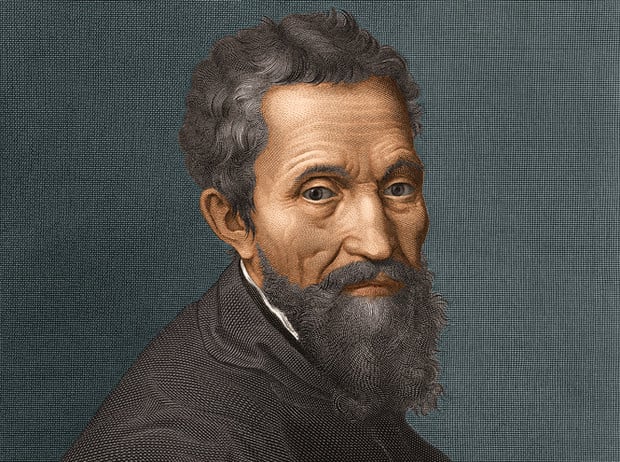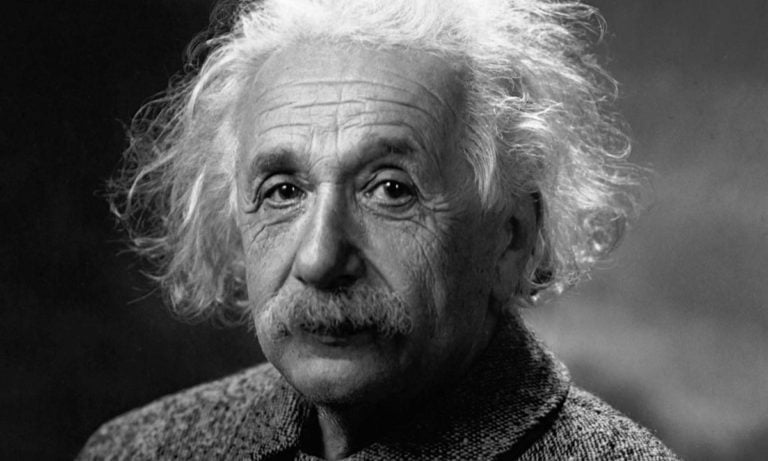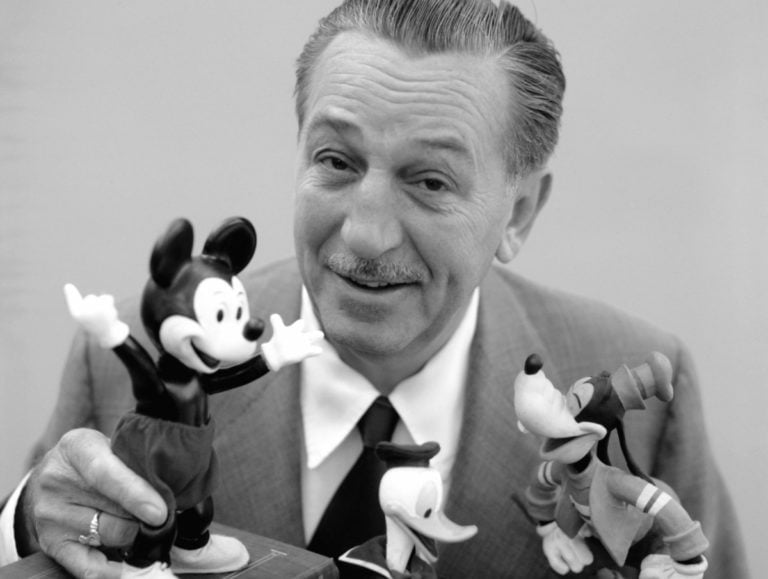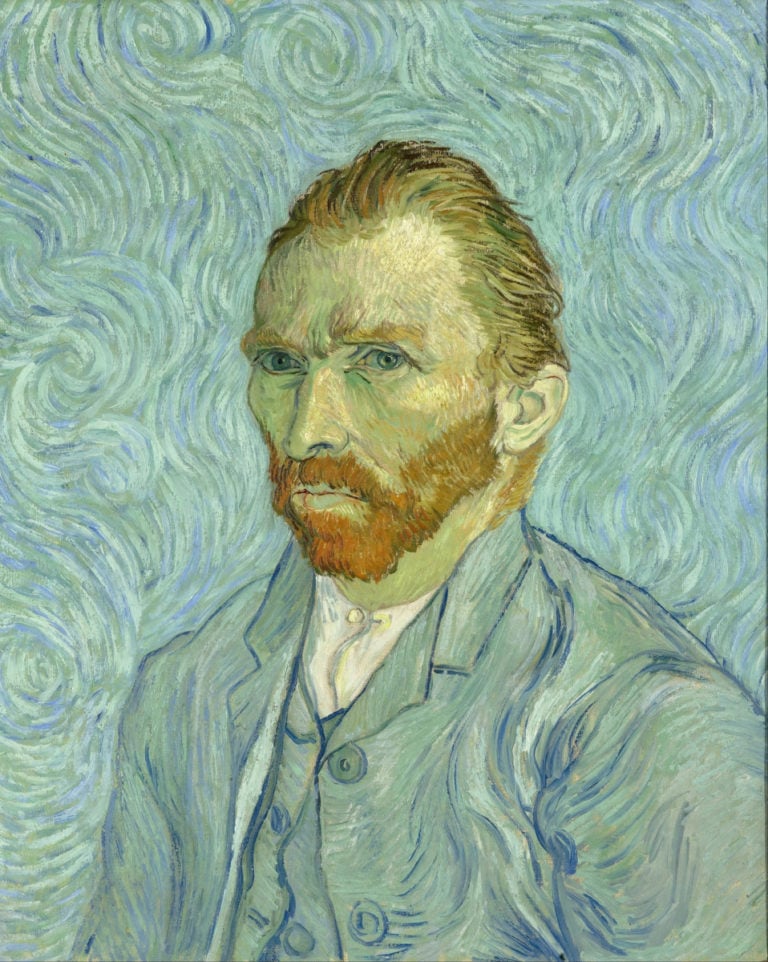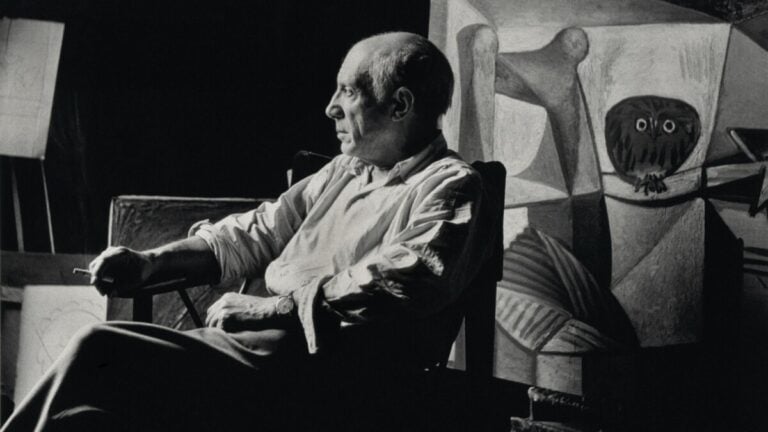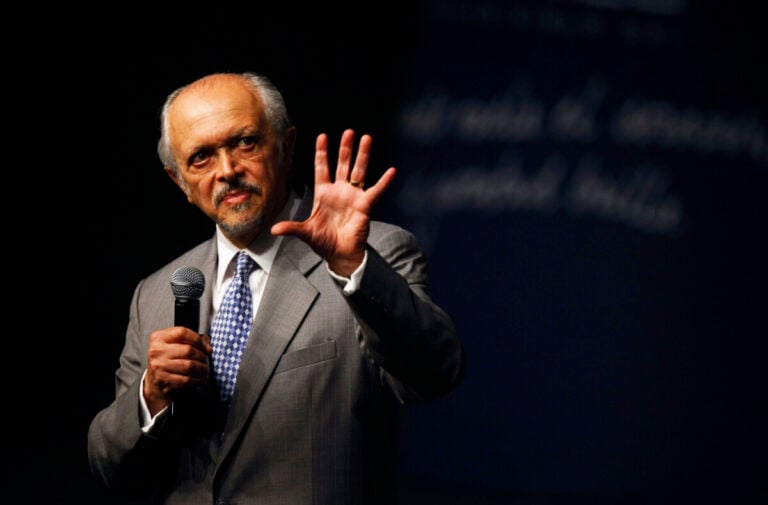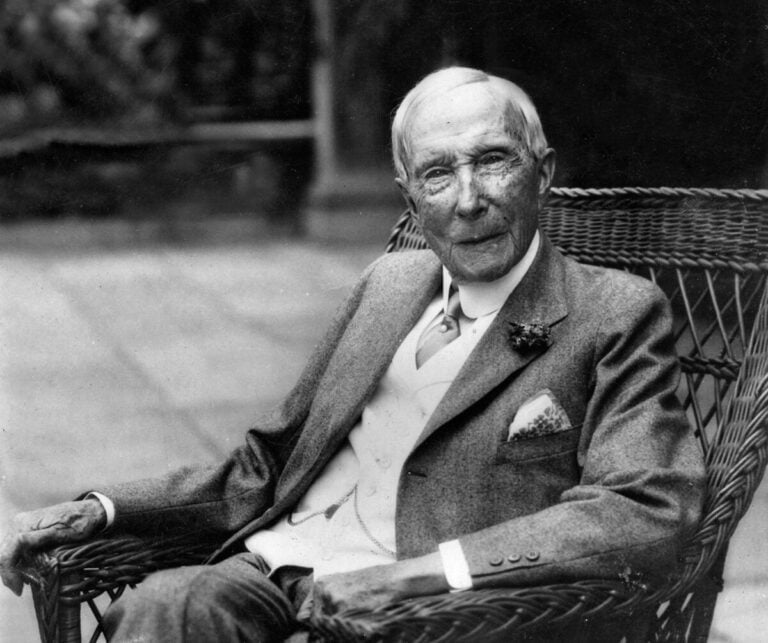Marc Chagall saw the world differently. There can be no doubt about this.
When he was born in the small town of Vitebsk in Belarus, a neighboring house was on fire. Later, in an autobiography entitled “My Life” by the artist, he writes: “Maybe that’s why I’m always so nervous.” Indeed, looking at his photographs, one can notice the omnipresent excited gleam in his eyes. Through these eyes he saw a world seething with life, colors, tenderness and happiness. This world that shines in his work is always pastoral and colorful.
Smell of childhood
As a child, he painted his paintings on sackcloths hanging over his bed. His many sisters secretly stole them and used them as rugs.
Doing something secretly in such a huge family was not easy. Mark was one of nine children. Recalling his childhood, Chagall wrote that “there was a smell of smoked herring.” Herring was everywhere – on the dining table, in the pantry. It filled his mother’s grocery store and was a staple of the factory where his father worked.
Able student
Finally, in 1906, yielding to her son’s promises, Chagall’s mother allowed him to attend the art classes of the famous local artist Yehuda Pen.
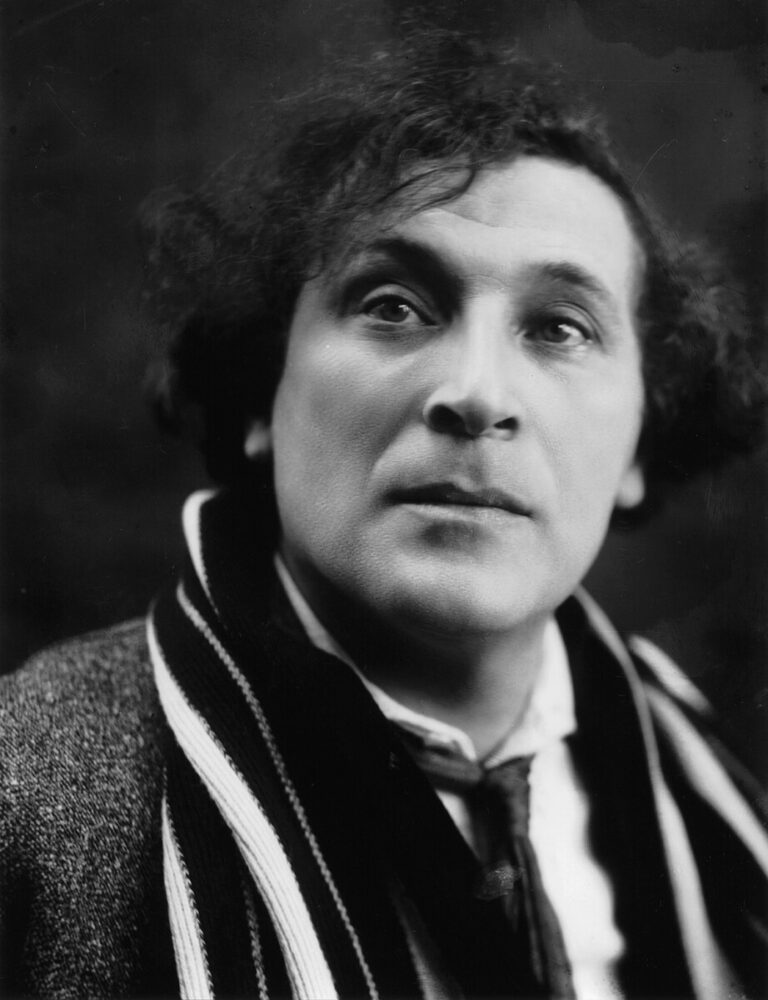
Mark was full of hopes and dreams, waiting for the famous master to pay attention to the beauty of his work. But his maximalism did not work: Pen did not consider Chagall talented. According to him, he was “capable” at best. The aspiring artist quickly lost interest in formal classical art. He didn’t understand why paint the cold marble heads of the ancient Greeks, when everything around was much more colorful, much more alive.
He really tried, only the ancient Greeks in his paintings looked like Orthodox Jews. Two months later, Chagall dropped out of Pen’s classes, despite his great respect for the teacher. He was disappointed, but still determined to show the world how he sees him, or maybe how he should be.
Beautiful life
Childhood for Chagall ended too quickly. It was time to leave the parental home, grow up …
Bella was Chagall’s only muse. Even before the wedding, he painted her naked, to the dismay of his religious mother. He painted her almost constantly: white, black, naked, with a bouquet of flowers flying over the city … It was she who inspired such masterpieces as “Birthday”, “Promenade” and “Bouquet of Flowers”. But all this was later. In the meantime, Chagall was young, in love and determined to conquer St. Petersburg.
Don’t give up
Petersburg did not really like the future world-famous avant-garde artist. Chagall tried to enroll in a technical drawing academy, hoping to meet like-minded artists and obtain a residence permit, without which Jews were not allowed to live in the capital.
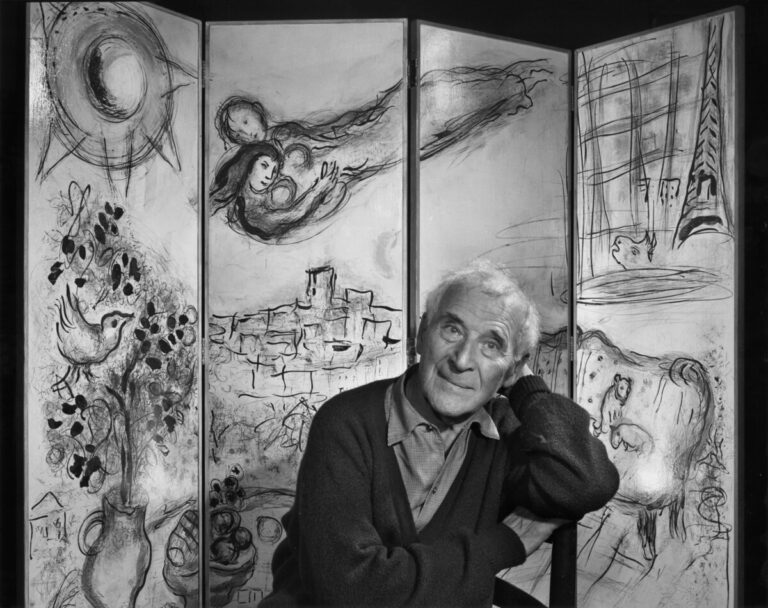
He was still an idealist and was genuinely surprised when the academy, created for the wealthy aristocracy, rejected a Jew from a poor family. The rejection did not affect him much psychologically – he was still confident about his vision. However, from a practical point of view, everything was difficult. Chagall was forced to live in dirty rooms, the roofs of which often leaked. He was even briefly arrested for not having a residence permit.
But he decided not to give up and, finally, in 1910 he entered an art school. And again he became uncomfortable. Classical art education was focused on the redrawing of antique statues and demanded realism. Chagall, on the other hand, wanted to change the world at will: he believed that if he sees a green face with a landscape on his forehead, why not draw it?
The colors of his world
By the age of 20, Chagall was completely sure that he would never get anything useful from an art school. Why bother when all you have to do is paint dead plaster Greeks?
Although he received praise for his work, he knew he wanted something else. Leon Bakst, a well-known theater decorator at that time, was the first to notice Chagall’s talent. It was he who sponsored him, who first visited Paris in 1910.
In Paris
After that, Chagall also called Paris his “second Vitebsk”. Despite the long separation from his distant homeland, he kept it in his soul wherever he went and, as a result, portrayed in his art: goats, herrings, beautiful curly people, violinists, merchants, lovers …
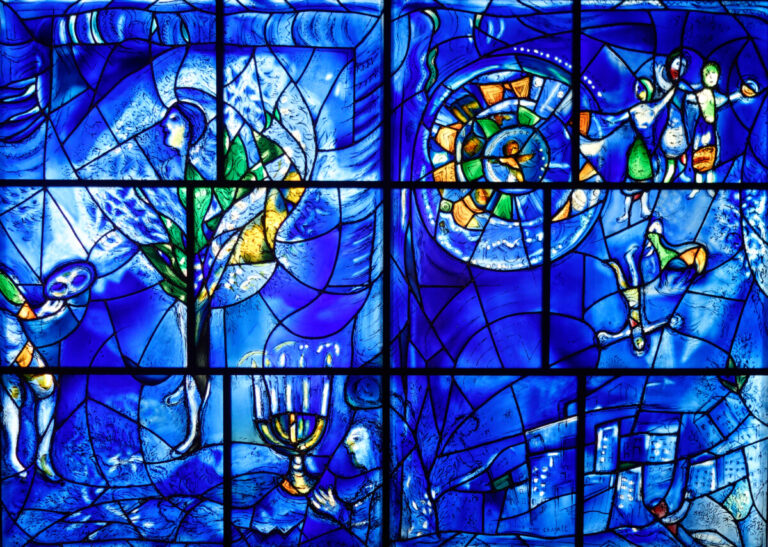
All the characters and objects clearly resembled the years of his childhood. He had phenomenal energy. During his three years in Paris, he painted hundreds of paintings and met dozens of people. Famous avant-garde poets, who quickly entered the circle of Chagall’s friends, came up with many terms for his work. They called his art “supernatural”, “colourful”, “surreal”.
Love in time of war
On the eve of World War I, Chagall returned to Belarus. He worked tirelessly on his engravings, rarely leaving the room, and then proposed to Bella.
Her parents were categorically against the union. The daughter of wealthy jewelers, who marries a poor artist, the son of a herring worker… What will the neighbors say? But neither Mark nor Bella were interested in what they would say about them, and in 1915 the couple got married.
After the revolution
Chagall welcomed the revolution of 1917. He was thrilled by how quickly things were changing, he was thrilled by the sense of release she gave. He received the post of commissar for the arts in the Vitebsk province. He brought his inexhaustible energy to the work.

He saw his hometown as a huge empty canvas. He wanted to decorate his houses with bright banners and frescoes, marking the beginning of a new era. Chagall wanted to teach people to love art. And so he did. On the first anniversary of the revolution, the city was painted with cows and goats, much to the surprise of Communist Party leaders. Disappointed with his service in Vitebsk, Chagall, together with his wife and four-year-old daughter, moved to Moscow to design the Jewish Chamber Theater.
Fame
For the next year, he taught painting at an international school for military orphans. But he was tired of the harsh communist regime and low-income lifestyle. He went to Paris.
This was followed by an avalanche of glory. His paintings have been exhibited all over the world, including the best galleries in Paris, Berlin, Cologne, Dresden, New York, Budapest, Amsterdam, Basel, Prague and London. His wife and daughter no longer had to make ends meet, desperately trying to find a piece of bread and sewing up stockings.
Paralyzed by loss
In 1944, the artist suffered the biggest shock of his life. His beloved Bella, his only inspiration, has died. Then came the news that his beloved Vitebsk was occupied by Nazi troops. On February 15, 1944, one of the New York weeklies published an appeal by the master of the brush to “My City of Vitebsk”.

“My dear Vitebsk, I haven’t seen or heard you for a long time, since I spoke to your sky and rested my hands on your fences. All these years I, like a saddened wanderer, could only paint your breath in my pictures. This is how I talked to you when I saw you in my dream. My dear city, in all your pain, you never asked me why I left you so long ago and what I was looking for instead.
We were apart, but each of my paintings personified your spirit and your face. I am happy and proud that you steadfastly resisted the worst enemy of mankind, I am proud of your people, their work and the life you have built. The best I can wish for myself is to hear you say that I have always been faithful to you, otherwise I would never have become an artist! For more than a year, Chagall could not work. Then he thoughtlessly picked up an unfinished painting in a corner of his studio.
World for Canvas
In 1947, Marc Chagall returned to France to live out the rest of his 98-year life there at The Hill villa near Saint-Paul-de-Vence on the Côte d’Azur.
At 65, he married Valentina Brodskaya, whom he affectionately called “Vava”. She, of course, could not compare with Bella and is depicted in only one of his paintings: simple, strangely realistic, not flying over the city, but sitting. After Chagall left the USSR in 1922, he was called a Frenchman, but he loved his Vitebsk so much that he depicted his native city in almost every picture.
He designed the facade of the UN building in New York, created a new interior design for the Paris Opera, worked in New York on the Metropolitan Opera murals. While working on his lifelong Bible illustration project, he visited religious buildings around the world, painting frescoes, creating stained glass windows. The whole world was his canvas. He filled it with color.

